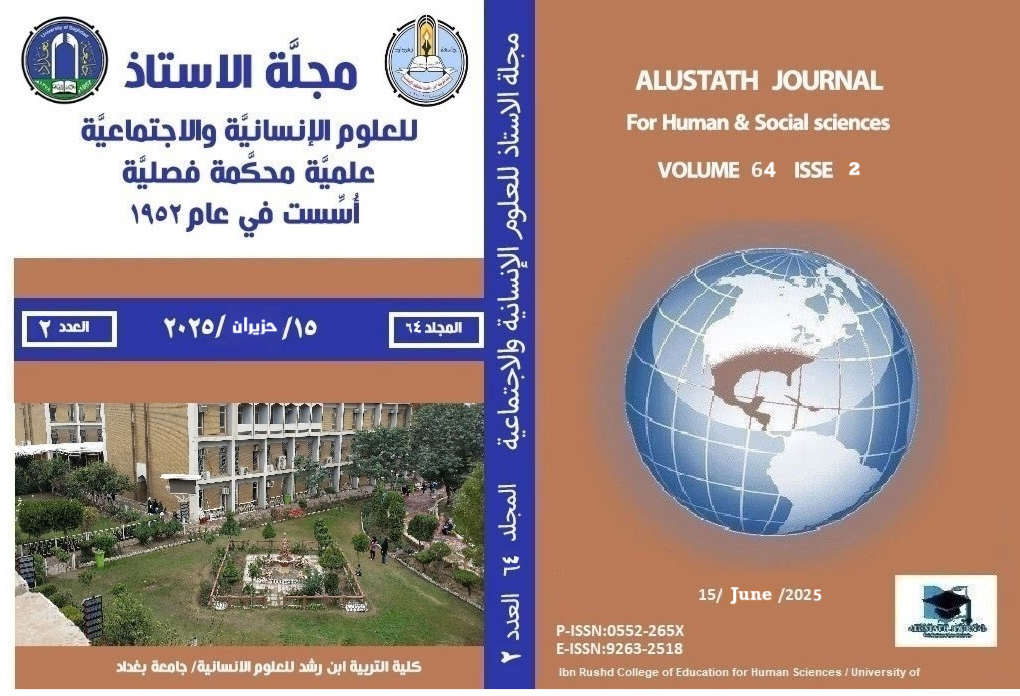Pioneers of Islamic Education in China Muhammad bin Abdullah bin Elias, d. 1597 AD
DOI:
https://doi.org/10.36473/cg838030Keywords:
Islamic education, China, Sheikh Muhammad bin Abdullah, cultural heritage, Chinese Islamic identity.Abstract
ABSTRACT This research deals with the biography of Sheikh Muhammad bin Abdullah bin Elias, one of the most prominent pioneers of Islamic education in China during the sixteenth and seventeenth centuries. The Sheikh was born in the city of Nanjing during the late Ming Dynasty and the beginning of the Qing Dynasty, and grew up in a distinguished scientific environment that enabled him to combine Islamic sciences with traditional Chinese culture . The research discussed his most prominent contributions to spreading Islamic education, including establishing religious schools in mosques to teach Islamic sciences and the Arabic language, and translating Islamic texts into the Chinese language, which helped enhance the correct understanding of Islam among Chinese Muslims He also focused on his efforts to prepare a generation of Muslim scholars who contributed to spreading the teachings of Islam with a balanced mix with local culture. The research concluded that Sheikh Mohammed bin Abdullah was a pivotal figure in integrating Islamic identity with Chinese society, which led to enhancing mutual understanding between cultures. His scientific and cultural legacy is a testament to the importance of education in strengthening ties between diverse communities
Downloads
References
• Abdul Rahman Najong. (1978). A Brief History of the Arabs in the Middle Ages. Beijing: Beijing Publishing House.
• Abdul Rahman Zaki. (1959). Muslims in the World Today. Egypt.
• Afaf Massad Al-Abd. (1980). Studies in the History of the Far East. Alexandria.
• Ahmed Abdul Qader. (2011). Types of Islamic Education in China. The Chinese Muslim.
• Ahmed Hamed. (1980). How Islam Entered Thirty-Six Countries. Al-Hilal Library.
• Ahmed Shalaby. (1990). Encyclopedia of Islamic History and Civilization. Dar Al-Uloom Publishing.
• Ali Nasser Al-Din. (2021). The Chinese Scholar Wang Daiyu. Turkey.
• Badr Al-Din Hai Al-Sini. (1950). Relations Between Arabs and China. Cairo.
• De Feng. (2000). Social Conditions in China. Beijing: Publishing and Translation House.
• Deng Houtesian. (2011). The Development of Islamic Education in China. Beijing.
• Deng Ming. (1996). Islamic Culture in China. Beijing: Publishing and Translation House.
• Ding Houtesian. (2011). The Development of Islamic Education in China. The Chinese Muslim.
• Fahmi Huwaii. (1988). Islam in China. Kuwait.
• Fawzi Darwish. (1988). The Far East (China and Japan). Egypt.
• Guo Yingde. (2004). History of Sino-Arab Relations. Beijing.
• Hamd bin Abdul-Munim Al-Himyari. (1984). Al-Rawd Al-Mi‘tar fi Khabar Al-Aqtar. Lebanon.
• Hamed Abdul Qader. (n.d.). Islam: Its Emergence and Spread in the World. Egypt.
• Hassan Ibrahim Hassan. (1996). The Political, Religious, and Cultural History of China. Beirut: Egyptian Renaissance Library.
• Hassanain Muhammad Youssef. (1998). Dictionary of Languages in China. Egypt.
• Ibrahim Nafi. (1934). China: The Miracle of the Twentieth Century. Dubai.
• Ibrahim Nafi. (1999). China: The Miracle of the Twentieth Century. Cairo.
• Joseph Needham. (1995). A Brief History of Civilization in China. Egypt.
• K. M. Panikkar. (1962). Asia and Western Domination. Egypt: Ministry of Culture and Guidance.
• Lan Biao. (1989). History of Nationalities in China (Vol. 1). (Translators: Beijing Publishing House). Beijing.
• Lan Jun Li. (2012). The Most Famous Scholar of the Ming Dynasty in China. Religions Journal in China, p. 161.
• Liu Shao. (1998). China’s Trade Relations with the Arabs. Beijing.
• Luo Yan Hui. (2010). The Study Experience of Sheikh Hu Dengzhou.
• Luo Yanhu. (2010). The Study Experience of Sheikh Hu Deng Zhu. Beijing.
• Ma Mingling. (2001). A Brief History of Islam. Beijing.
• Mali Gu. (2013). The Role of Chinese Muslim Scholars and Islamic Schools. Islamabad.
• Maming Ling. ( 1988). A Brief History of Islam in China. Beijing.
• Masoud Al-Khawand. (1998). Historical Encyclopedia. Beirut.
• Mohi Youssef. (1999). Islam and the Merchants. Saudi Arabia.
• Muhammad Emad Al-Din. (1998). Encyclopedia of World Countries. Beirut.
• Muhammad Makin. (1934). The History of Islam in China. Cairo.
• Muhammad Youssef Huayin. (1987). Islamic Education in China: Past and Present. Islamic Affairs.
• Nasser bin Faleh bin Nasser. (1427 AH). Confucianism: An Analytical Critical Study in Light of Islamic Doctrine. Saudi Arabia.
• Ragab Muhammad Abdul Halim. Geographical Encyclopedia of the Islamic World (Spread of Islam in Persia, Afghanistan, Pakistan, and India). Ibn Masoud Islamic Publications.
• Salama Muhammad Al-Harfi. (2023). Arabs and China: A Deep-Rooted History and Future Horizons. Jordan.
• Sayed Abdul Majid Bakr. (1422 AH). Muslim Minorities in Asia. Saudi Arabia.
• Shanghai University of International Studies. (1994). Simplified Dictionary. Shanghai.
• Shihab Al-Din Abu Abdullah bin Yaqut Al-Hamawi Al-Baghdadi. (1984). Mu‘jam Al-Buldan (Geographical Dictionary). Beirut.
• Wan Li. (2019). The Islamic Association of China. King Faisal Center for Research and Islamic Studies.
• Wan Yao Bin. (2007). The Chinese Islamic Encyclopedia. Beijing: Sichuan Shishu Publishing.
• Wang Huai De. (1988). The Biography of the Great Scholar Hu Dengzhou. The Chinese Muslim Magazine.
• Zakaria Abdul Hassan. (1987). Festivals and Celebrations in China. Egypt.
• Zeng Ailin. ( 2019). Shedding Light on the Formation of Religious Idea, Journal of Religions in China. , Beijing.
• Zhengl, F. (1981). “Islamic Education in Shaanxi Province during the Ming and Qing Dynasties,” Collection of Essays on Islam in China during the Qing Dynasty,,, pp. 217-219. Ningxia People’s Publishing House.
• Zhu Tsun. (, 1990). Chinese Muslim Scholars Series. Tsinghai Publishing House.












